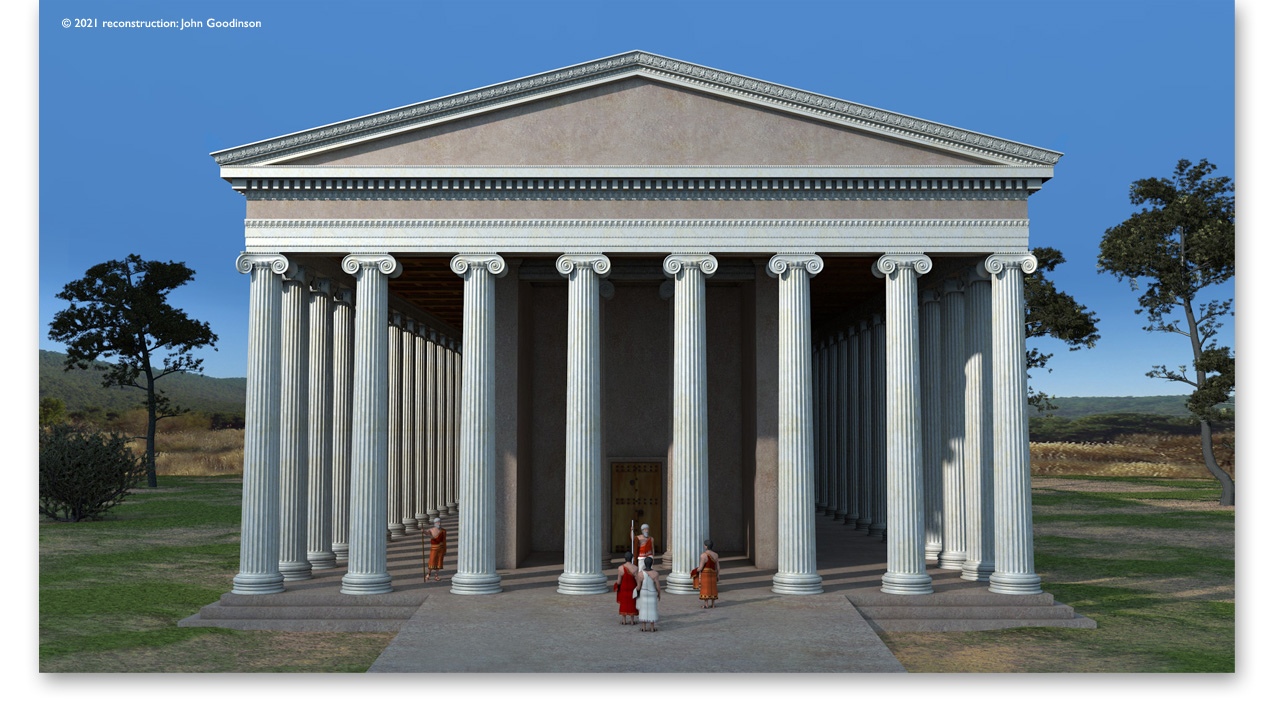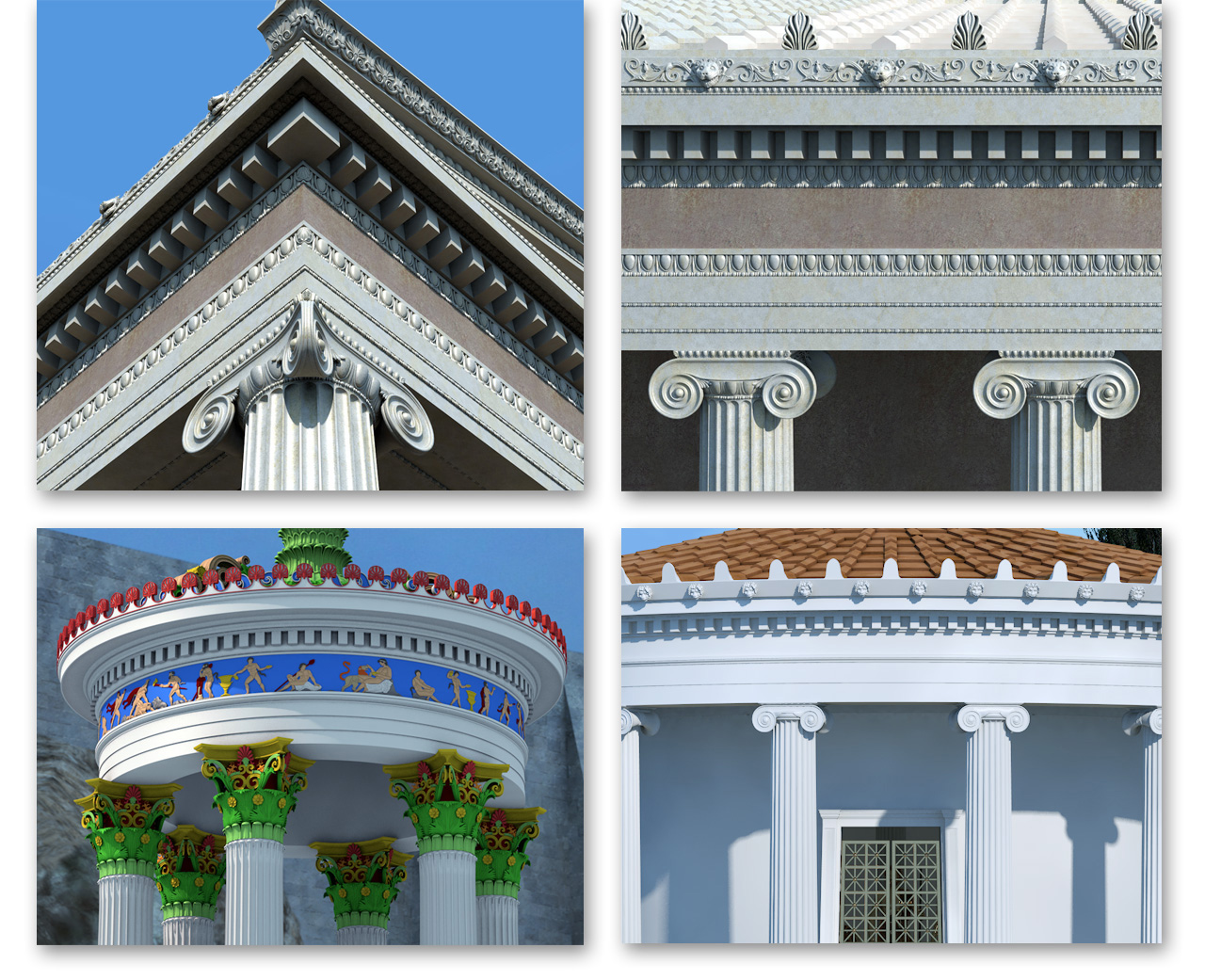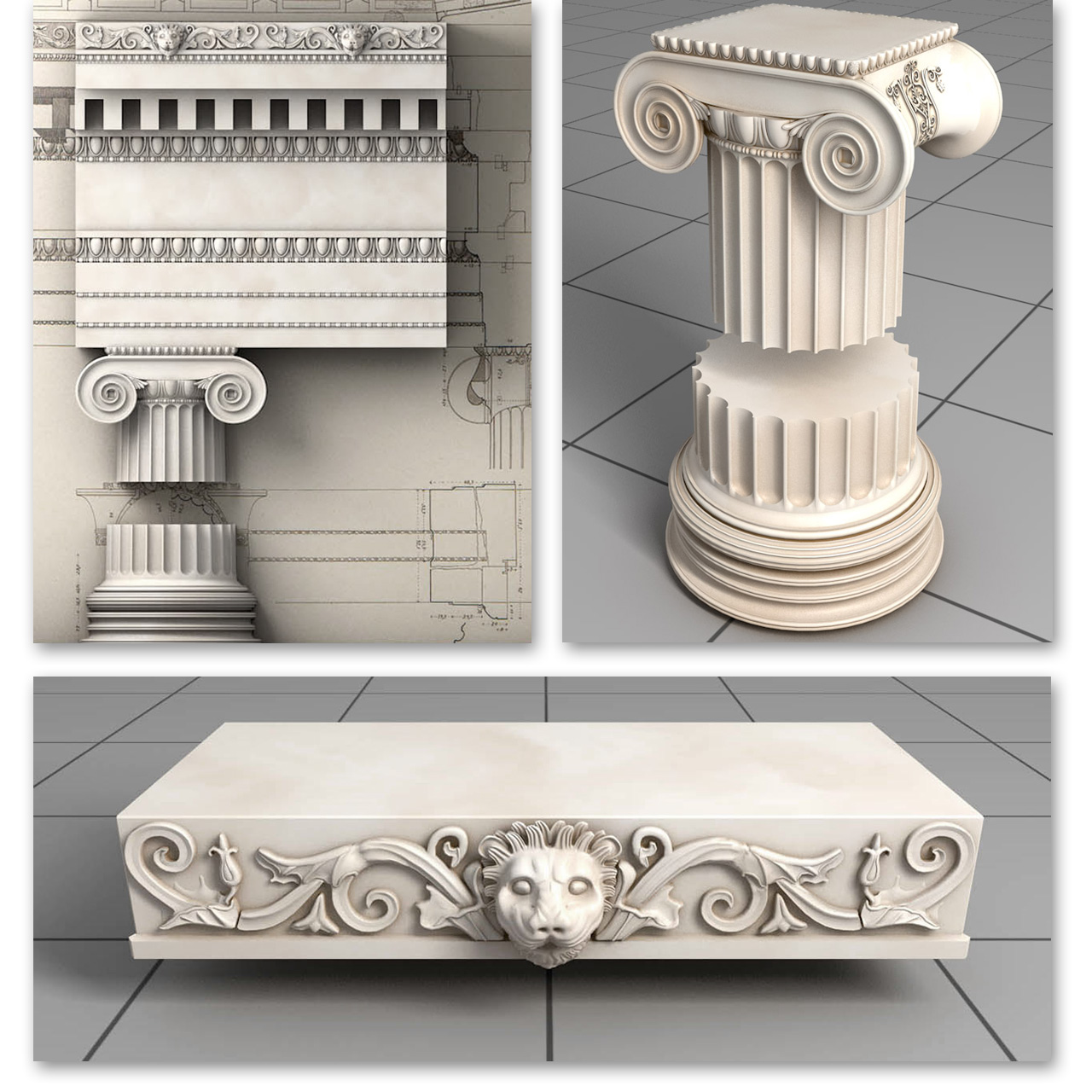The temple of Messon on the island of Lesbos. Anasynthesis has liaised with Dr Yannis Kourtzellis to reconstruct the temple which is amongst the most outstanding examples of Ionian architecture.
The pan-Lesbian sanctuary of Messon on the island of Lesbos
The sanctuary of Messon is located at the centre of the island of Lesbos. It was established in early historic times. Its name is preserved on two inscriptions of the 2nd century BCE, when the sanctuary served as seat of the Lesbian Koinon (Commonwealth).
The temple architecture of the late-Classical period
The monumental Ionian-style temple that incorporates a number of pioneering architectural features was built most probably in the second half of the 4th century BCE.
The pseudodipteral double in antis temple, with 8 columns in the short sides and 14 in the long sides, is one of the first, known, cases of a pseudo-dipteral ground plan in ancient Greek architecture and the only example in the geographical region of Greece. In pseudodipteral temples, the inner colonnade of dipteral temples is omitted. As a result, there are four long porticos around the main temple (cella), the pronaos and the opistodomos.
The peristyle combines an undecorated frieze with dentils in a different rock and colour shade. The above mentioned combination is met almost simultaneously at the temple of Messon and in two other well-known ancient Greek monuments: The Choragic Monument of Lysicrates at Athens (335/334 BCE) and the Philippeion at Olympia (338 BCE). 
Above: capitals and details from the temple of Messon. Below: Choragic Monument of Lysicrates and Philippeion at Olympia.
The detailed rendering and the variety of the relief decorative elements, including those at the baluster-sides of the Ionic capitals place the temple of Messon among the most outstanding examples of Ionian architecture.
Despite the fact that almost the entire peristyle (colonnade) of the temple is built of white, volcanic rock, marble has been selectively used for the decorative lion-head water-spouts, the antefixes and for the acroteria, decorated most probably with floral motifs. The cella walls were made of reddish volcanic rock.
The architect’s name has not been preserved in ancient literature. According to Vitruvius the inventor of pseudodipteral ground plan was Hermogenes (De arch. 3.3.8). Modern researchers however, believe that the architect of the temple of Messon was a contemporary of Pytheos, the architect of the temple of Athena Polias in Priene, who worked during the second half of the 4th century BCE.
The temple was destroyed, in all probability, by an earthquake around the 3rd-4th century AD and the age-old sanctuary lost its fame as a centre of both cult and power. In this period are dated seven ceramic kilns which were found in the area. Most architectural members of the temple seem to have been burned for lime production. Other members of the temple were used in the kilns’ construction.
Dr Yannis Kourtzellis
Hellenic Ministry of Culture & Sports,
Ephorate of Antiquities of Lesbos